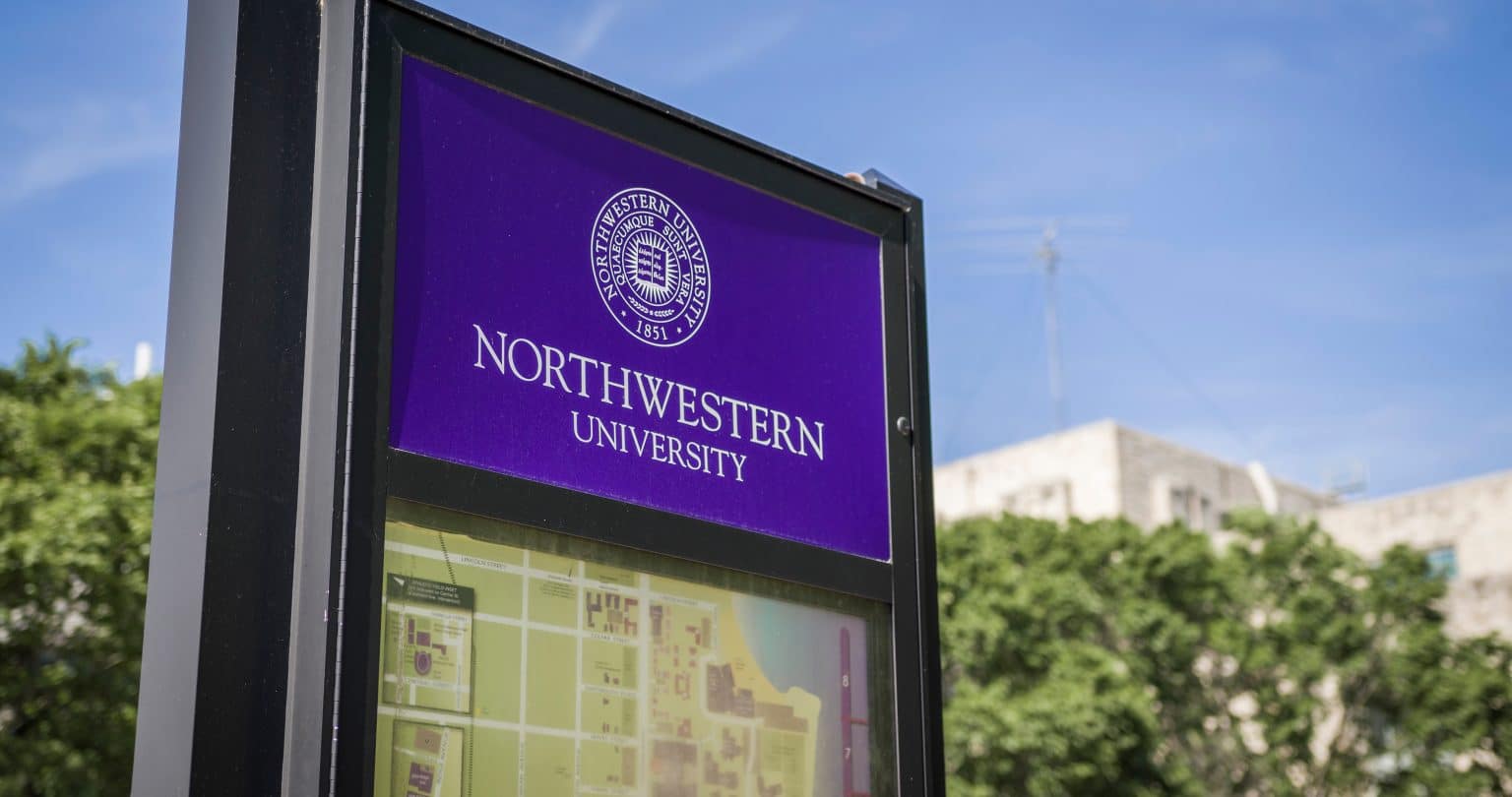Exploring Northwestern University’s Yield Rate
Northwestern University, nestled in the suburbs of Chicago, is renowned for its exceptional academic programs and highly competitive admissions process. Central to Northwestern’s admissions strategy is the pivotal concept of the yield rate. For the Class of 2026, Northwestern reported a yield rate of 63%.
In this article, we’ll explore the intricacies of yield rates, elucidate their significance in the realm of university admissions, and investigate the unique factors influencing Northwestern’s yield rate. Furthermore, we’ll delve into the implications of these rates on the university’s student population, scrutinize the strategies employed by Northwestern to enhance its yield rate and contemplate the potential scenarios for Northwestern’s yield rate as the landscape of higher education continues to evolve.
Understanding the Concept of Yield Rate
Yield rate, also known as the enrollment rate, is the percentage of admitted students who choose to enroll in a particular university. It serves as an indication of the university’s desirability among accepted applicants. The yield rate is calculated by dividing the number of students who enroll by the number of students who were offered admission.
The Role of Yield Rate in University Admissions
Yield rate holds a significant influence on university admissions decisions. High yield rates suggest that admitted students are highly interested in attending the institution, whereas low yield rates indicate the opposite. Admissions committees often prioritize sustaining a high yield rate as it reflects positively on the university’s reputation and ranking.
When a university has a high yield rate, it demonstrates that the institution is successful in attracting and retaining students. This can be attributed to various factors, such as the university’s academic programs, campus culture, extracurricular opportunities, and overall student experience. Prospective students are more likely to choose a university with a high yield rate because it signifies that the institution offers a fulfilling and rewarding educational journey.
On the other hand, a low yield rate can raise concerns for admissions committees. It may indicate that accepted students have found more appealing options elsewhere or that the university’s marketing and recruitment efforts are not effectively conveying the institution’s strengths. In such cases, admissions offices may need to reassess their strategies and make adjustments to improve the yield rate.
Factors Influencing Yield Rate
Several factors can impact Northwestern University’s yield rate. One such factor is the selectivity of the institution. Northwestern’s reputation as a top-tier university attracts a large pool of highly qualified applicants. Consequently, the university can afford to be more selective in its admissions decisions, resulting in a higher yield rate.
Northwestern University’s rigorous academic standards and challenging curriculum contribute to its selectivity. The university’s faculty members are renowned experts in their respective fields, and the opportunity to learn from these distinguished professors is a significant draw for prospective students. Additionally, Northwestern’s commitment to fostering a vibrant intellectual community and encouraging interdisciplinary collaboration further enhances its appeal.
Another factor influencing yield rate is the financial aid and scholarship offerings. Northwestern’s generous financial aid packages can incentivize accepted students to choose the university over other options. The university recognizes the importance of making education accessible to all qualified students, regardless of their financial background.
By providing substantial financial support, Northwestern aims to alleviate the financial burden on students and their families, making the university an attractive choice for prospective students.
Furthermore, Northwestern University’s strong alumni network plays a role in influencing the yield rate. The university boasts a vast network of successful alumni who have excelled in various fields, including business, academia, arts, and public service.
This network provides valuable connections and opportunities for current students and recent graduates. Prospective students are often drawn to institutions with well-established alumni networks as they recognize the potential for mentorship, internships, and career advancement.
In conclusion, yield rate is a crucial metric in university admissions. It reflects the level of interest and commitment from admitted students and can significantly impact a university’s reputation and ranking. Factors such as selectivity, financial aid offerings, and alumni networks all play a role in influencing the yield rate of institutions like Northwestern University.
A Closer Look at Northwestern University’s Yield Rate
Examining Northwestern’s historical yield rates provides valuable insights into enrollment trends and patterns.
Northwestern University, located in Evanston, Illinois, is renowned for its academic excellence and rigorous programs. With a rich history dating back to 1851, the university has consistently attracted top-tier students from around the world. In this analysis, we will delve deeper into Northwestern’s yield rate, exploring its historical trends and comparing it to national averages.
Historical Trends in Northwestern’s Yield Rate
Over the past decade, Northwestern University has maintained a consistently high yield rate, ranging between 45% and 65%. This is a testament to the university’s strong reputation and desirability among admitted students. The stable yield rate indicates that the university consistently attracts and enrolls a significant proportion of its admitted applicants.
One possible explanation for Northwestern’s impressive yield rate is its comprehensive approach to student recruitment. The university’s admissions team works diligently to engage with prospective students, providing them with personalized information and support throughout the application process.
Additionally, Northwestern’s commitment to financial aid and scholarships ensures that admitted students have access to the resources they need to pursue their education without undue financial burden.
Furthermore, Northwestern’s vibrant campus community and diverse range of academic and extracurricular opportunities play a crucial role in attracting admitted students. The university boasts state-of-the-art facilities, world-class faculty, and a wide array of student organizations, clubs, and sports teams. These factors contribute to a vibrant and inclusive campus environment, making Northwestern an attractive choice for prospective students.
Comparing Northwestern’s Yield Rate to National Averages
Northwestern University, located in the Chicago suburbs, boasts an impressive yield rate, with the Class of 2026 achieving a remarkable 63%. To put this in perspective, the national average yield rate for private universities hovers around 35%.
Northwestern’s yield rate substantially exceeds this benchmark, a testament to the university’s exceptional ability not only to attract but also to successfully enroll students.
One possible reason for Northwestern’s higher yield rate compared to the national average is its strong academic reputation. The university consistently ranks among the top institutions in the country, offering a wide range of prestigious programs across various disciplines. This academic excellence, coupled with Northwestern’s commitment to research and innovation, makes it an appealing choice for high-achieving students.
Moreover, Northwestern’s location in the vibrant city of Evanston, just a short distance from downtown Chicago, provides students with unparalleled opportunities for internships, networking, and cultural experiences. The city’s thriving business community, renowned museums, and diverse neighborhoods create a dynamic backdrop for students to explore and grow.
Additionally, Northwestern’s robust alumni network plays a significant role in attracting and enrolling students. The university’s graduates have gone on to achieve great success in various fields, and their accomplishments serve as a testament to the quality of education and support they received at Northwestern. Prospective students are often drawn to the prospect of joining this esteemed network and benefiting from the connections and mentorship opportunities it offers.
In conclusion, Northwestern University’s consistently high yield rate is a result of its strong reputation, comprehensive student recruitment efforts, vibrant campus community, and numerous opportunities for academic and personal growth. By consistently attracting and enrolling a significant proportion of admitted students, Northwestern solidifies its position as a top-tier institution in the United States.
The Impact of Northwestern’s Yield Rate on Student Population
Northwestern’s yield rate not only affects the university’s reputation but also shapes the composition of its student population.
When considering the impact of Northwestern’s yield rate on the student population, it is important to recognize the significance of a high yield rate in fostering a diverse community. A high yield rate can contribute to a diverse student body at Northwestern.
By successfully enrolling a significant proportion of admitted students, the university can tap into a broad range of perspectives, experiences, and backgrounds. This diversity enhances the academic environment and fosters a rich culture of inclusivity.
Imagine a campus where students from different parts of the world come together, bringing with them unique cultural traditions, languages, and perspectives. This diversity not only enriches classroom discussions but also creates a vibrant social atmosphere where students can learn from one another and broaden their horizons.
It is through this exposure to diverse ideas and experiences that students at Northwestern are prepared to thrive in an increasingly interconnected and globalized world.
Yield Rate and Academic Performance
A high yield rate can also have a positive impact on academic performance at Northwestern. Admitted students who actively choose to attend the university are more likely to be motivated and engaged in their studies. This dedication translates into higher levels of academic achievement and contributes to Northwestern’s strong academic reputation.
When students have a genuine desire to be part of a particular institution, they are more likely to invest their time and energy into their studies. They are driven by a sense of purpose and a passion for learning, which leads to a higher level of academic performance. Northwestern’s high yield rate ensures that the university attracts students who are not only academically capable but also deeply committed to their education.
Moreover, a high yield rate allows Northwestern to provide its students with a supportive and collaborative learning environment. With a strong sense of community, students can engage in meaningful academic discussions, form study groups, and seek guidance from professors. This collaborative atmosphere fosters intellectual growth and encourages students to push the boundaries of their knowledge.
Furthermore, a high yield rate enables Northwestern to attract top-notch faculty members who are passionate about teaching and research. These dedicated professors are drawn to institutions with a high yield rate because they know they will be working with motivated and talented students. As a result, Northwestern is able to offer its students a world-class education with faculty members who are at the forefront of their respective fields.
Strategies Northwestern University Uses to Improve Yield Rate
Northwestern University employs various strategies to enhance its yield rate.
One of the key strategies that Northwestern University utilizes to improve its yield rate is through extensive outreach and marketing efforts. The admissions office at Northwestern understands the importance of increasing awareness and attracting highly qualified applicants. To achieve this, the university engages in visits to high schools, college fairs, and virtual information sessions.
These outreach activities provide an opportunity for prospective students to learn more about Northwestern’s unique offerings, such as its renowned academic programs, state-of-the-art facilities, and vibrant campus community. By showcasing these aspects, Northwestern aims to generate interest and encourage potential students to apply and ultimately enroll.
In addition to outreach and marketing efforts, Northwestern University recognizes the significance of financial aid and scholarship opportunities in improving its yield rate. The university is committed to ensuring that admitted students from varying socioeconomic backgrounds can afford to attend.
Northwestern offers need-based financial aid packages that take into account the financial circumstances of each individual student and their family. This commitment to affordability helps to alleviate the financial burden that may deter some students from enrolling.
Furthermore, Northwestern University provides numerous merit-based scholarships that recognize students’ exceptional achievements and talents. These scholarships not only serve as a form of recognition but also act as an additional incentive for students to choose Northwestern over other institutions.
Moreover, Northwestern University understands the importance of creating a supportive and inclusive environment for its students. The university actively promotes diversity and inclusion on campus, ensuring that all students feel welcomed and supported.
Northwestern’s commitment to fostering a diverse community is reflected in its recruitment efforts, where the admissions office actively seeks out students from underrepresented backgrounds and provides them with the necessary resources and support to thrive academically and personally.
Furthermore, Northwestern University offers a wide range of extracurricular activities and organizations that cater to various interests and passions. These opportunities allow students to explore their passions outside of the classroom, develop leadership skills, and form meaningful connections with their peers. By providing a vibrant and engaging campus life, Northwestern aims to create an environment that students are excited to be a part of, thus increasing its yield rate.
In conclusion, Northwestern University employs a multi-faceted approach to improve its yield rate. Through extensive outreach and marketing efforts, financial aid and scholarship opportunities, a commitment to diversity and inclusion, and a vibrant campus life, Northwestern strives to attract and enroll highly qualified students who will contribute to the university’s academic and social community.
Future Projections for Northwestern University’s Yield Rate
Looking ahead, several potential challenges and opportunities may impact Northwestern’s yield rate.
Potential Challenges and Opportunities
Increasing competition among top-tier universities poses a potential challenge to Northwestern’s yield rate. As other institutions enhance their offerings and scholarship opportunities, Northwestern must continue to innovate and adapt to retain its competitive advantage.
On the flip side, technological advancements bring opportunities for Northwestern to strengthen its yield rate. The rise of online education opens doors for expanded enrollment and the ability to reach a wider pool of students across geographical boundaries.
The Role of Online Education in Yield Rate
Online education platforms have the potential to increase Northwestern’s yield rate by offering flexible alternatives for students who may not have been able to enroll due to geographical constraints or scheduling conflicts. By leveraging online platforms effectively, Northwestern can attract and enroll a more diverse student population, further enhancing its reputation and standing within the higher education landscape.
In conclusion, Northwestern University’s yield rate plays a crucial role in its admissions strategy and impacts various aspects of the institution. By understanding the concept of yield rate, analyzing historical trends, considering factors influencing yield rate, and evaluating its implications, we gain valuable insights into Northwestern’s enrollment dynamics.
Furthermore, exploring the strategies employed to improve yield rates and projecting future scenarios allows us to envision the university’s trajectory in the ever-evolving higher education landscape.
Having all the necessary information is important before choosing any course of action. AdmissionSight is always here to assist you with any questions or concerns. We have more than ten years of expertise assisting students in successfully navigating the challenging admissions process.
Consult with AdmissionSight and find out what we can do to help you get into the school of your choice by ensuring that you are sufficiently aware and well-prepared for the application process.










































